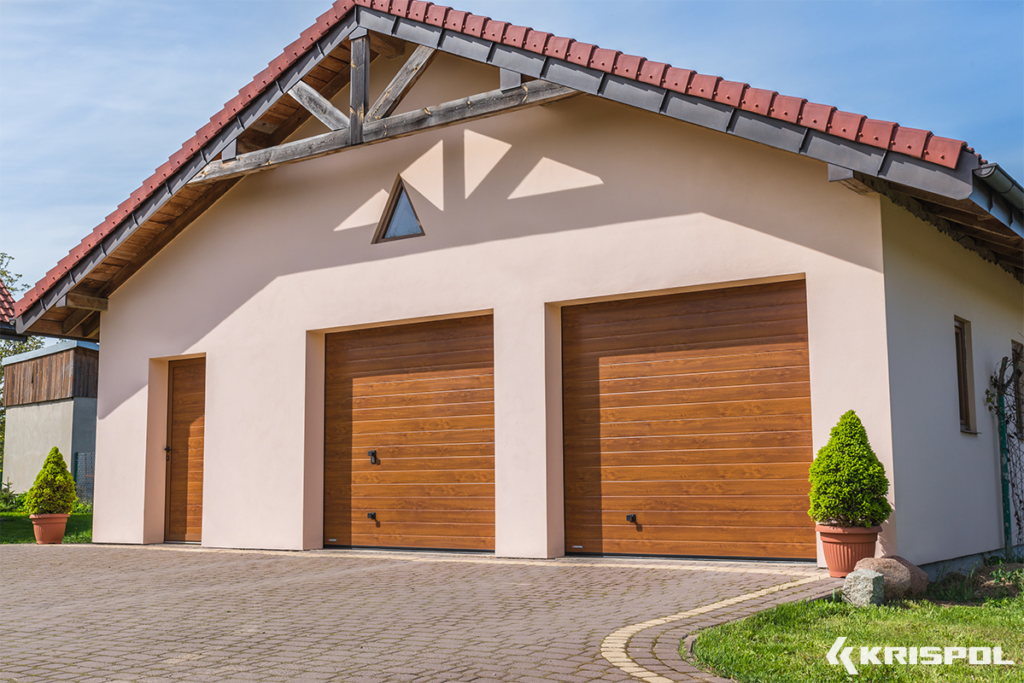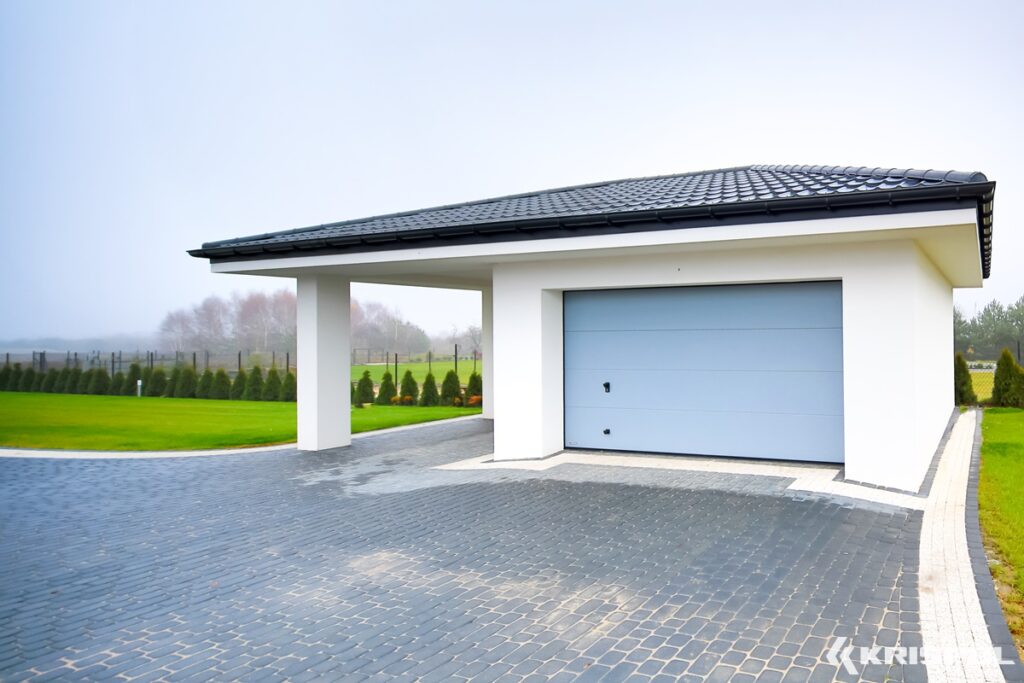

Every investor planning to build a house has to decide already at the design stage whether the garage is to be an integral part of the house or a free-standing building. There are no perfect solutions, and each of them has its pros and cons. This article is considering both of the solutions.
Built-in garage – advantages
Built-in garages are currently very popular. This option has many advantages and is a very practical solution. A huge advantage of it is saving space on the plot, which may be a keyword argument for owners of small parcels. During bad weather, we can get comfortably into the car. For optimum convenience, it is worth equipping your garage with automatic doors. Decision to build in our garage lets us reduce costs associated with the construction of the walls and wiring. On top of that, a built-in garage provides an additional entrance to the house and becomes, along with the entrance door, its main entry point. The heat transmitted from the house through the walls to the garage eliminates the need for heating.
Built-in garage – disadvantages
However, when you decide to built-in your garage, you must take into account the disadvantages of such a solution. First of all, there is a need to install a drainage system. Water appearing on the floor must somehow be drained out of the garage. Another drawback of a built-in garage is that it reduces the usable area of the house itself. There is also a risk that exhaust gases will enter the house. To avoid this problem, very good ventilation in the garage has to be provided. You must also remember that the door connecting the garage with the rest of house has to be airtight. Otherwise, there is a risk of heat escaping from the house.


Free-standing garage – advantages
A free-standing garage does not reduce the usable area of the house. The noise generated by the car’s engine will not disturb the peace of the household and the exhaust gases produced will not pollute the air in the living space. There is also no need of heating. A free-standing garage may also provide additional space dedicated for other activities, for example, a DIY corner or a locker for garden or sports equipment, especially if the house doesn’t have a basement or additional storage space inside.
Free-standing garage – disadvantages
The biggest disadvantage of a free-standing garage is the need to obtain a building permit for it. This applies to all buildings larger than 35 sq m. Such a solution generates additional costs related to costs of floor plan drawings, materials and employment of a construction manager along with a construction and finishing crew. It’s also important to remember that a drainage system will be necessary – water or snow that may collect on the floor must be somehow removed outside the structure of the garage. We also have to accept the fact that we will always have to walk from the garage to the house regardless of the weather, which can be especially bothersome during the autumn-winter months.
 Garage doors
Garage doors Facade garage doors
Facade garage doors Aluminium Side and garage doors
Aluminium Side and garage doors Rolling doors
Rolling doors Aluminium entrance doors
Aluminium entrance doors Sectional industrial doors
Sectional industrial doors Rolling grilles
Rolling grilles Rolling doors for industry
Rolling doors for industry Drives
Drives